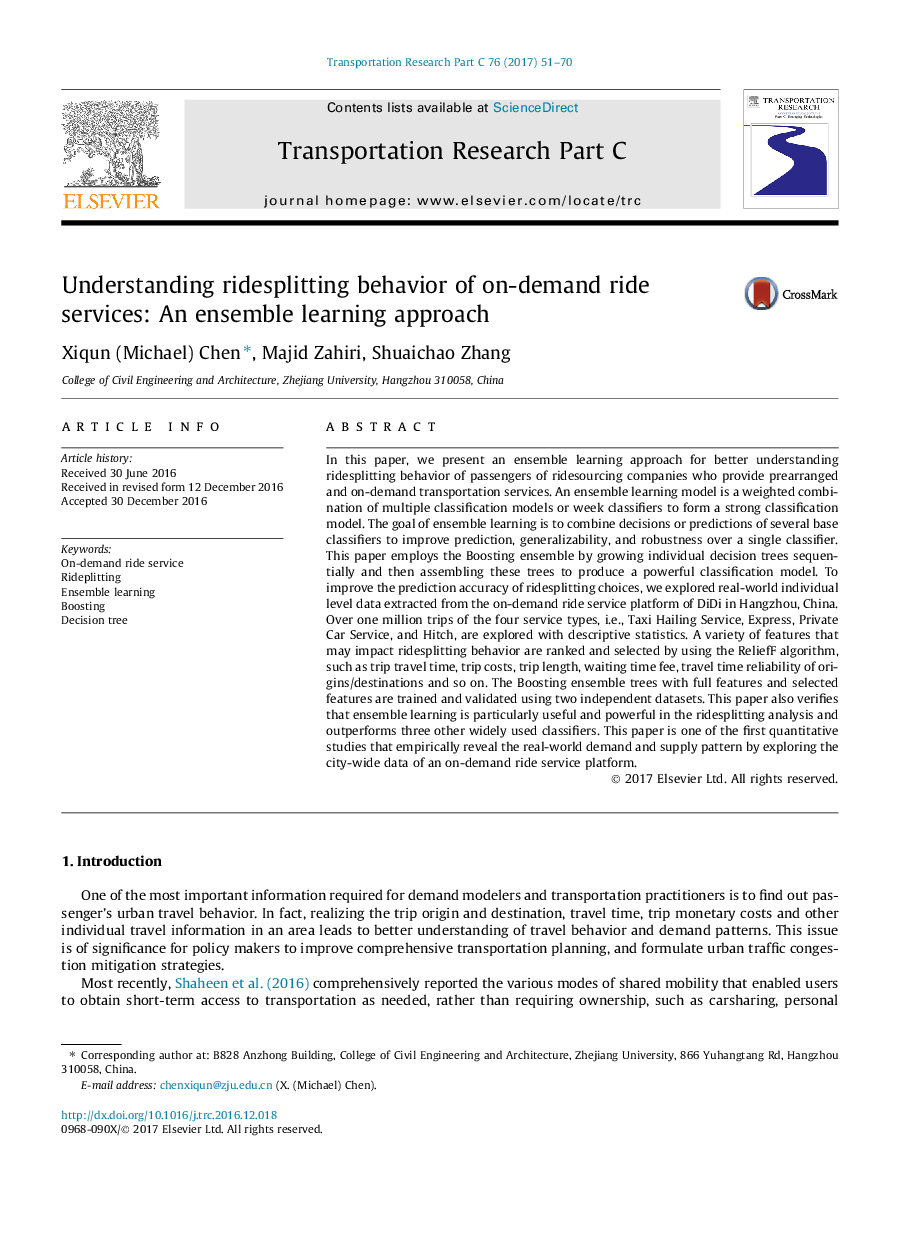| Article ID | Journal | Published Year | Pages | File Type |
|---|---|---|---|---|
| 4968519 | Transportation Research Part C: Emerging Technologies | 2017 | 20 Pages |
Abstract
In this paper, we present an ensemble learning approach for better understanding ridesplitting behavior of passengers of ridesourcing companies who provide prearranged and on-demand transportation services. An ensemble learning model is a weighted combination of multiple classification models or week classifiers to form a strong classification model. The goal of ensemble learning is to combine decisions or predictions of several base classifiers to improve prediction, generalizability, and robustness over a single classifier. This paper employs the Boosting ensemble by growing individual decision trees sequentially and then assembling these trees to produce a powerful classification model. To improve the prediction accuracy of ridesplitting choices, we explored real-world individual level data extracted from the on-demand ride service platform of DiDi in Hangzhou, China. Over one million trips of the four service types, i.e., Taxi Hailing Service, Express, Private Car Service, and Hitch, are explored with descriptive statistics. A variety of features that may impact ridesplitting behavior are ranked and selected by using the ReliefF algorithm, such as trip travel time, trip costs, trip length, waiting time fee, travel time reliability of origins/destinations and so on. The Boosting ensemble trees with full features and selected features are trained and validated using two independent datasets. This paper also verifies that ensemble learning is particularly useful and powerful in the ridesplitting analysis and outperforms three other widely used classifiers. This paper is one of the first quantitative studies that empirically reveal the real-world demand and supply pattern by exploring the city-wide data of an on-demand ride service platform.
Related Topics
Physical Sciences and Engineering
Computer Science
Computer Science Applications
Authors
Xiqun (Michael) Chen, Majid Zahiri, Shuaichao Zhang,
